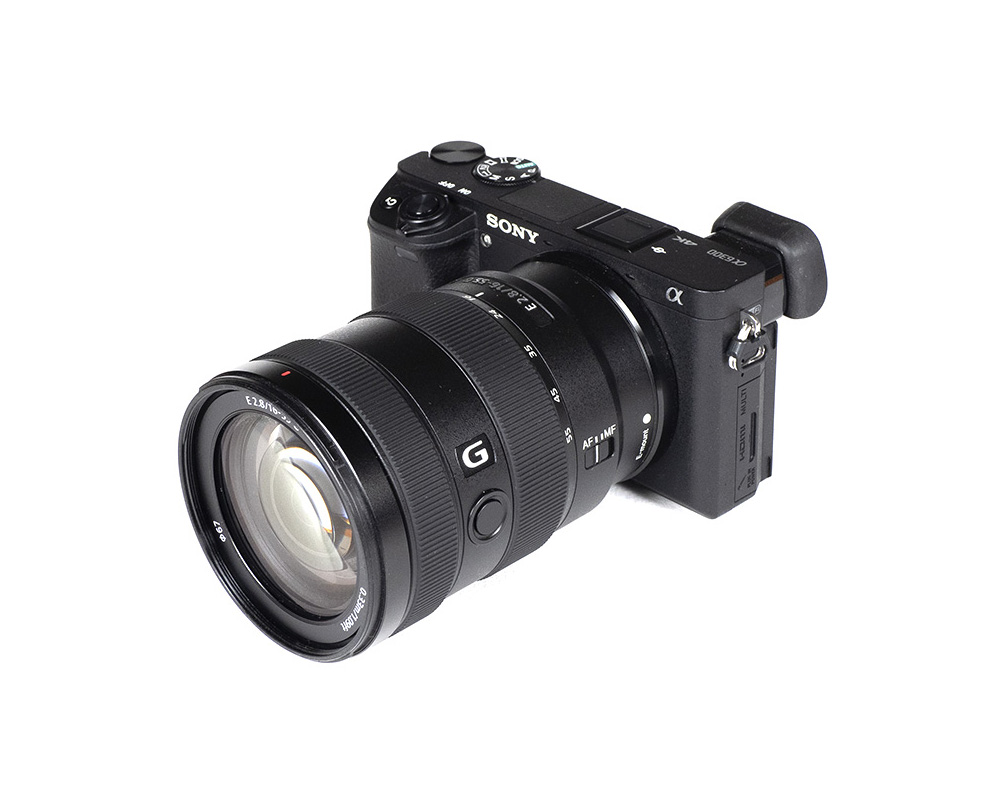Introduction
Sony’s APS-C system has been a 2nd class citizen during the last few years. New native APS-C format lenses are rare, and the lineup is rather limited compared to e.g. Fuji.
To be fair – Sony users can always use full-format E-mount lenses anyway so the situation isn’t really dire. However, even when ignoring the potentially higher costs, full-format lenses aren’t feasible when it comes to standard zoom lenses. E-mount has not been without options in this respect, albeit a high-quality lens was not provided until late 2019 – namely the Sony E 16-55mm f/2.8 G. In terms of specs, this was surely what many APS-C users have wished for … except for the steep pricing of ~$1300 / 1100EUR. Let’s see whether its performance can match its price tag.
The E 16-55mm f/2.8 G is a member of the G-class family of lenses, which is best described as “prosumer” lineup with correspondingly high build quality.
The construction incorporates strong plastics for the lens barrel based on a metal mount. The lens extends when zooming out, but there’s no wobbling of the inner lens tube whatsoever. It’s also dust- and moisture-resistant. Both the zoom- and focus rings operate smoothly. A fluorine coating on the front element helps to repel water and oily fluids. Typical for many high-end Sony lenses, there’s a focus stop button on the lens barrel. A petal-shaped lens hood is part of the package. The most surprising aspect of this lens is probably the comparatively compact size. The comparable Fujinon XF 16-55mm f/2.8 WR R is 30% heavier and “fatter”, for instance.

The lens uses an XD Linear Motor for fast, precise, quiet AF. Manual focusing works by wire. Sony implemented a linear drive system for this which can come in handy for video. An image stabilization system has not been implemented which is a little disappointing for a modern lens. After all, there are still Sony APS-C cameras in the lineup that don’t feature in-body IS.
| Specifications | |
|---|---|
| Equiv. focal length (full-format) | “25-84mm” (in terms of field-of-view) |
| Equiv. aperture (full-format) | “f/4.3” (in terms of depth-of-field) |
| Optical construction | 17 elements in 12 groups inc. 4x aspherical, 3x ED elements |
| Number of aperture blades | 9 (rounded) |
| min. focus distance | 0.33m (max magnification 1:5) |
| Dimensions | 73x100mm |
| Weight | 494g |
| Filter size | 67mm |
| Hood | petal-shaped (bayonet mount, supplied) |
| Other features | focus hold button, Dust and moisture resistant, Nano-AR coating, fluorine coating |
Distortion
Unfortunately, we have to start the formal analysis with an ugly aspect – image distortions.
Let’s have a look at the native characteristic first here. At 16mm, the barrel distortion is nothing short of excessive at 8%. That’s not a fisheye – yet – but still very disappointing. The issue is reduced to a more sane distortion of ~2.5% at 24mm. At 35mm things have evened out before moving to a medium pincushion distortion of ~1.4% at 55mm.
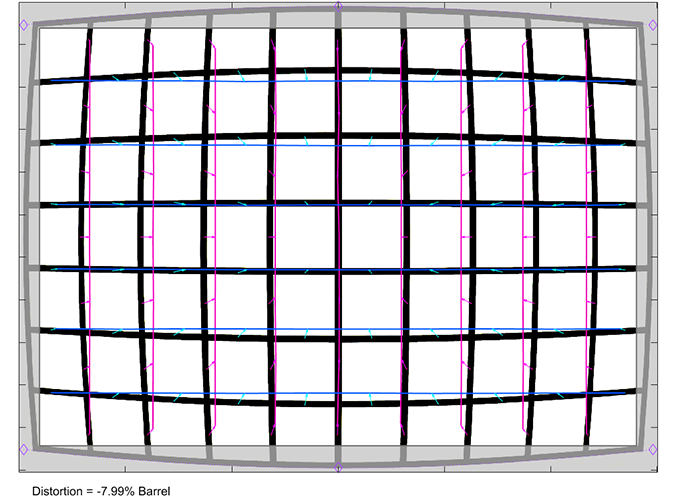

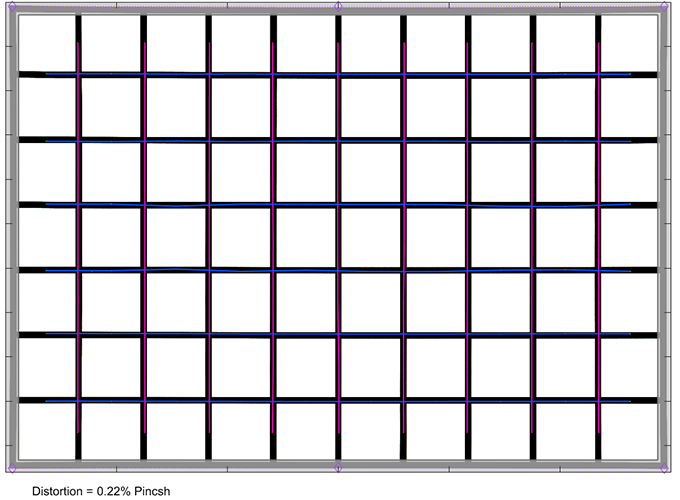
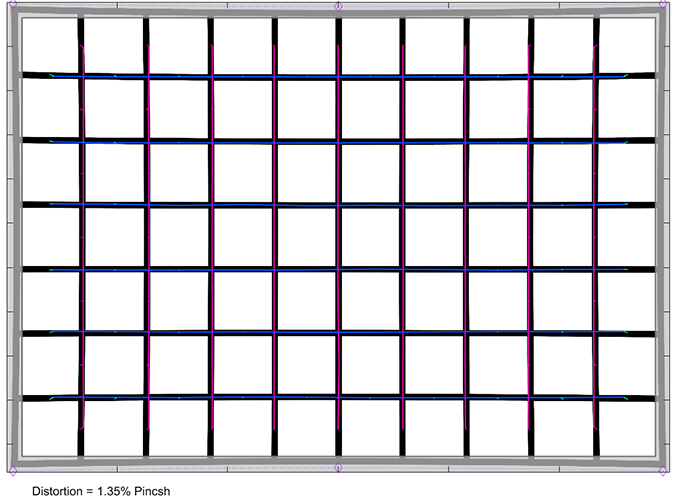
It is very obvious that Sony never intended to promote low image distortions as merit with this lens. In fact, the in-camera controls for image auto-correction don’t even allow switching off distortion control. With activated image correction, there is nothing to worry about in this respect at least.
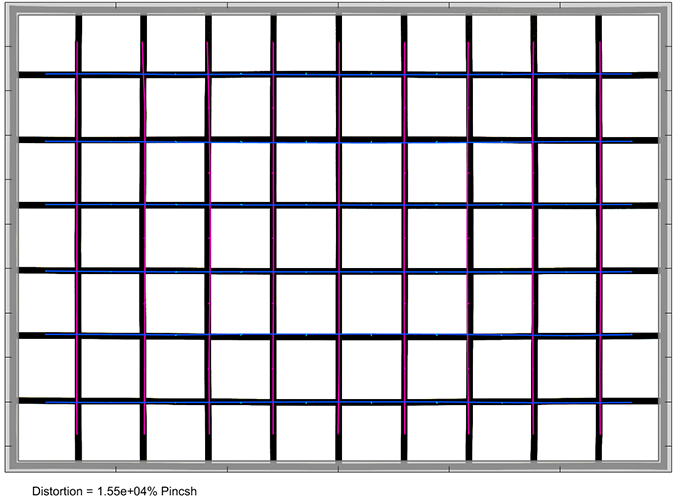


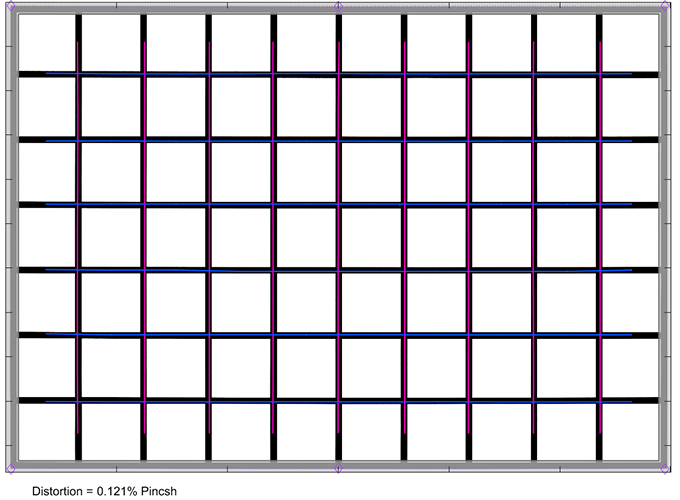
Vignetting
Moving on to vignetting, we have a look at the raw performance again first. Without any image correction, the results are UNUSABLE at 16mm. The corners are just BLACK at this setting. Once again, it’s quite clear that distortion correction just isn’t meant to be switched off.

To illustrate the issue – here’s a shot at 16mm f/2.8 without image correction.

With distortion correction activated, the black corners are gone at 16mm. The vignetting is still very high at over 2EV at f/2.8, but the results are acceptable from f/5.6 onward. The vignetting is, of course, lower at longer focal lengths with decent results from f/4 onward.
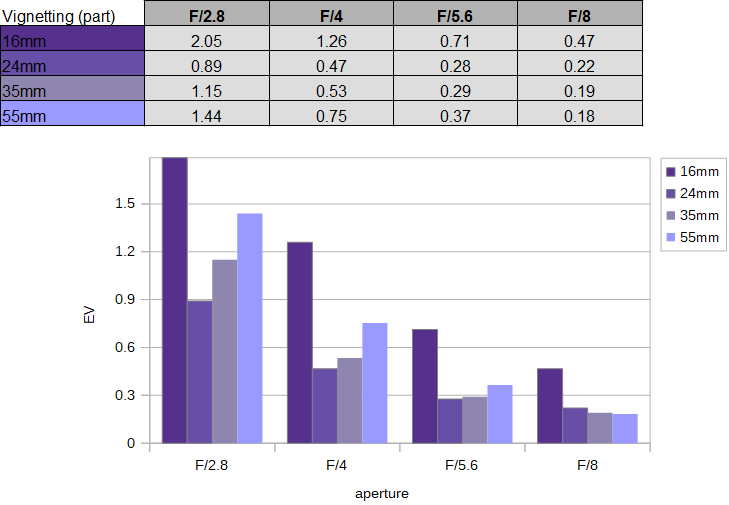
When activating both distortion and vignetting compensation, the results are acceptable at f/2.8 with a light falloff just below 1EV. Some vignetting is still visible at the short & long end at f/4, though.
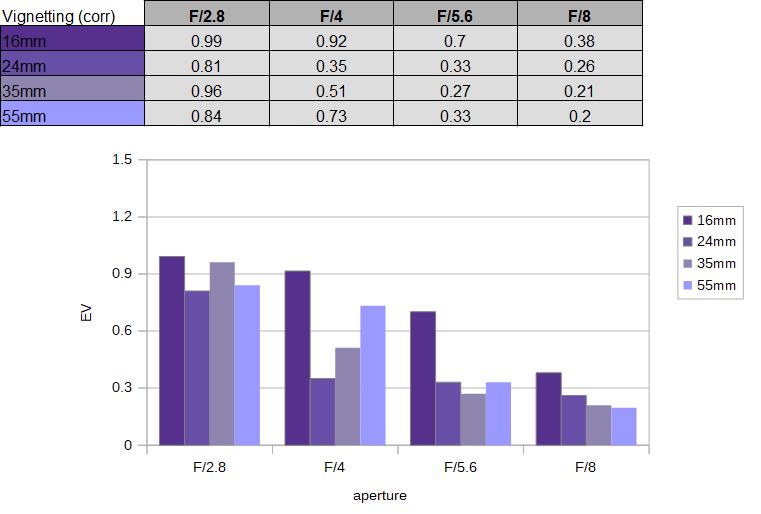
MTF (resolution)
So following these mixed results, let’s check the “beef” thus the resolution of the Sony E 16-55mm f/2.8 G – and this is where it shines – with one caveat. The center quality is generally excellent at all mainstream apertures and throughout the zoom range. The borders & corners are also superb in the low to mid-range. There’s a slight drop at 55mm, but the outer image field is still very good, even at f/2.8. Overall, this is very impressive.
The field curvature is minimal and the centering quality of the tested sample was pretty good.
Please note that the MTF results are not directly comparable across the different systems!
Below is a simplified summary of the formal findings. The chart shows line widths per picture height (LW/PH) which can be taken as a measure of sharpness. If you want to know more about the MTF50 figures you may check out the corresponding Imatest Explanations

So that being said … the above figures were obtained from RAW files. And the story is a little different with activated distortion correction – at least at 16mm. The MTF graph below illustrates how the auto-correction deteriorates the resolution at this setting. It’s not super dramatic, but rather than having an almost biting sharpness, the borders/corners are “merely” very good. Even the center suffers a bit, albeit this is probably not noticeable in real life.
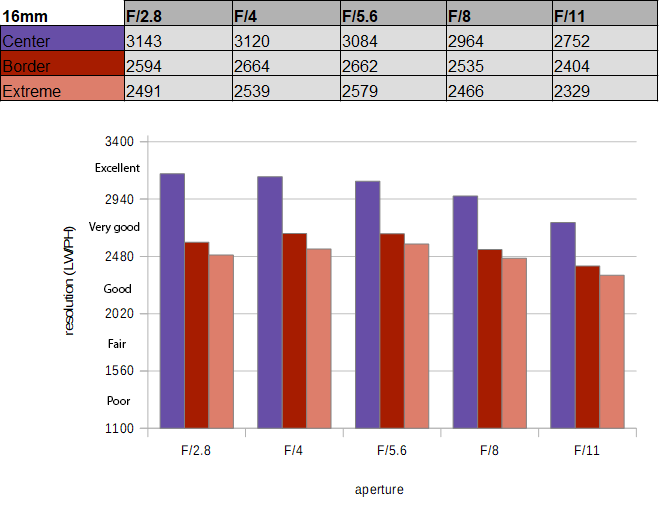
Chromatic Aberrations (CAs)
Lateral CAs are basically absent and nothing to worry about.

Bokeh
The Sony E 16-55mm f/2.8 G may be fast by APS-C standards, but in terms of bokeh, it behaves more like a “24-83mm f/4.3” full format lens, so don’t expect wonders in terms of object isolation capabilities. If you want to achieve a decent amount of object solution, you better go close.
The Sony lens has a complex optical design with several aspherical elements. Aspherical elements are never a good precondition for clean, out-of-focus highlights, and it shows. The inner disc zone is quite busy, as you can see below. However, there is almost no outlining, and the discs are perfectly circular even at f/5.6, thanks to no less than 9 curved aperture blades.

When looking at the disc characteristic across the image field, there is some deterioration towards the corners, but the “good” zone is fairly broad, even at f/2.8. The corner discs have an odd shape, though, which is less pleasing than the “cat eyes” that we are normally seeing here. Stopping down to f/4 helps with this, and the corner discs are mostly recovered by f/5.6.

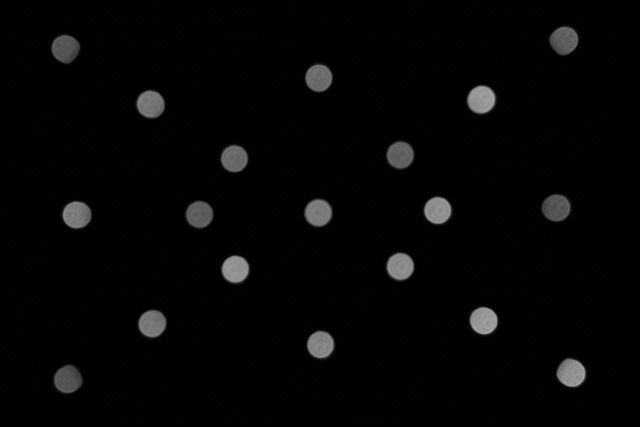
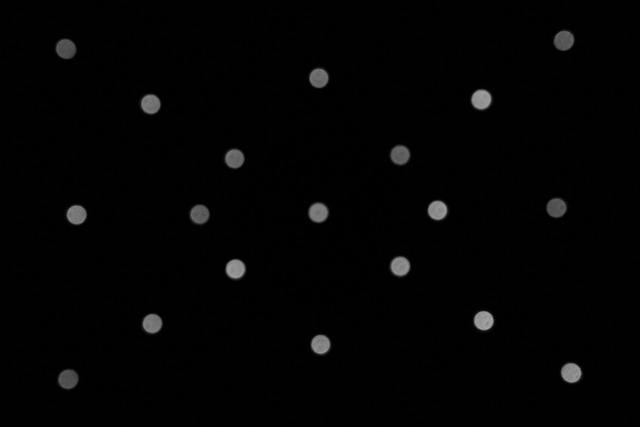
The general out-of-focus rendition is smooth, especially in the background (shown to the left below). This is clearly better than on most standard zoom lenses.

Bokeh Fringing (LoCA)
Bokeh fringing is about axial CAs – sometimes also called LoCAs. These are very difficult to remove in post-processing. The Sony E 16-55mm f/2.8 G shows some fringing at f/2.8 – you may stop the greenish tint in the background pattern and the purple one in the foreground. This is rather typical for a lens in this class. Stopping down reduces the issue to a negligible degree from f/5.6.


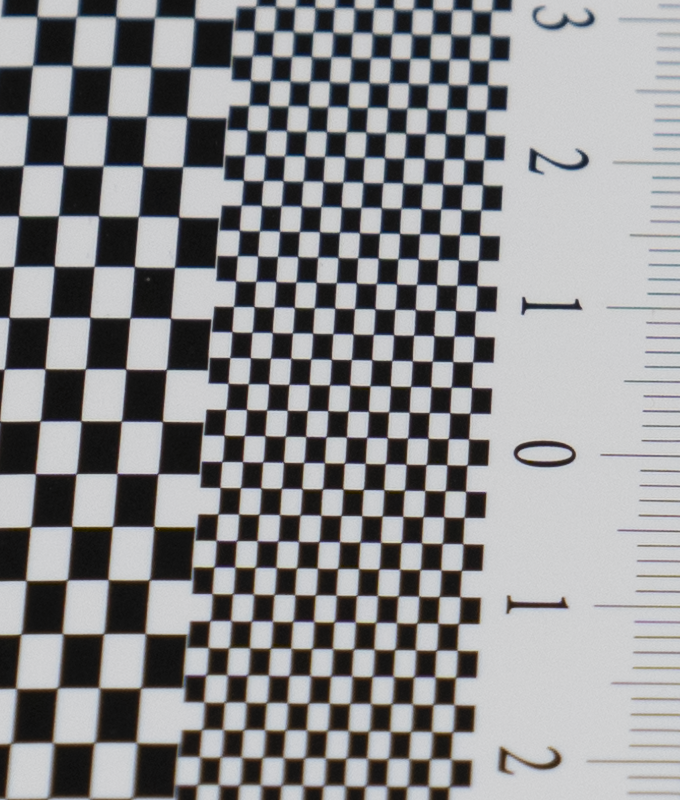
Sample Images
Competition
There are probably two competing lenses in this lens class. The Sony/Zeiss ZA 16-70mm f/4 OSS (center below) is an oldie by now. It offers more reach at the tele end, but it is clearly inferior in terms of performance, specifically in the image corners. A more serious contender is probably the new Tamron 17-70mm f/2.8 Di III VC. While it gives up a little at the wide end, it adds a little more at the long end (Equiv. “26-105mm”), which is certainly interesting for some. It also offers image stabilization which is especially attractive for users of the A6100/6300/6400. It’s somewhat more affordable, too. While we haven’t tested the Tamron yet, it’s certainly worth a look.

Image courtesy of camerasize.com
Let's get the elephant in the room out of the way immediately - the Sony E 16-55m f/2.8 G is not meant to be used without image auto-correction - Sony is making this clear in the settings as well. You can't switch off distortion correction for JPGs. While this may be disappointing at this price point, most users won't really care about this question anyway.
With activated image auto-correction, it's probably the best APS-C standard zoom lens there is on the market today. It shows no weakness in terms of image resolution, and there are no CAs to speak of. The corrected distortions are - obviously - nothing to worry about. There is still some visible vignetting at f/2.8, but it's not excessive and stopping down helps, of course. The quality of the bokeh is on a decent level for a standard zoom lens. Out-of-focus highlights are a bit busy but mostly circular, and the general rendition is impressively smooth actually.
The build quality is very high, but we expected no less from a G-class lens. Sony used quality materials and implemented sealing against the elements. The lens extends during zooming. This may not be ideal, but if you want to achieve decent optical quality, it's still the way to go for all manufacturers. The AF is pretty speedy and silent. The biggest drawback is probably the lack of an image stabilizer. If you own an A6500/A6600 you won't care, but the vast majority of Sony APS-C users can't use in-camera stabilization. That being said ... if you can afford the rather expensive Sony E 16-55mm f/2.8 G, you probably tend to have the latest and greatest camera body anyway. While Sony's APS-C lens lineup is still far from being complete, it has now assembled an interesting gang of quality zoom lenses - the Sony E 10-18mm f/4 OSS, E 16-55mm f/2.8 G, and E 70-350mm f/4.5-6.3 G OSS represent a quite compelling compact and low-weight combo.
-
Optical Quality
-
Build Quality
-
Price / Performance


